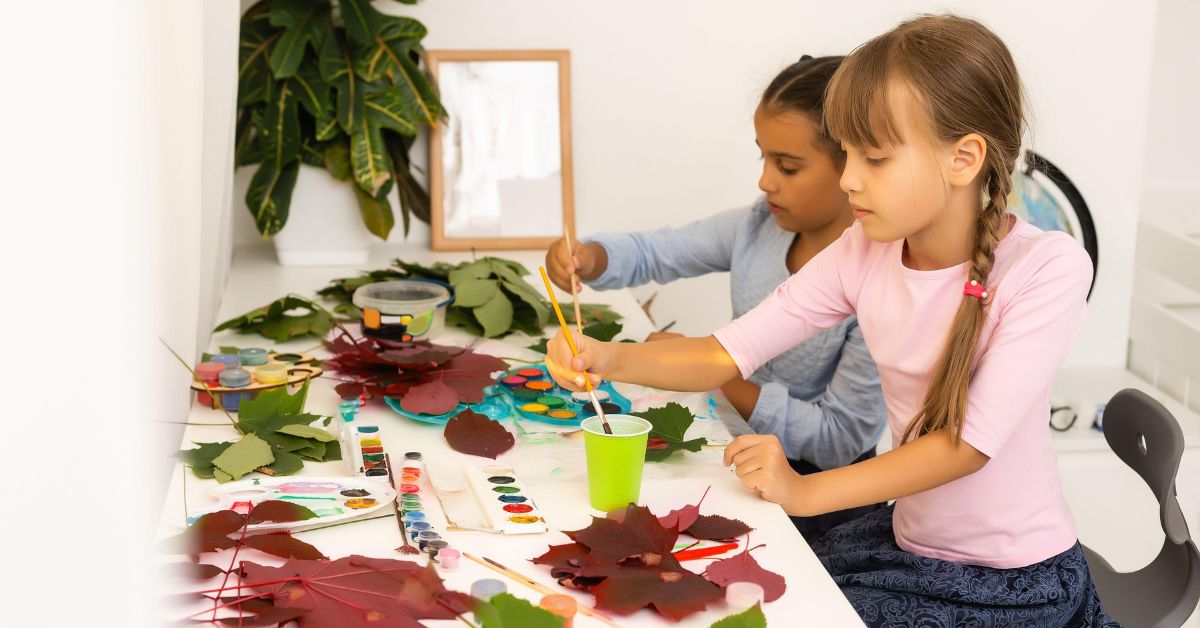Nature journaling for homeschoolers is a powerful way to spark curiosity, nurture creativity, and deepen a love of learning. By blending science, art, and writing, nature journaling allows children to engage with the natural world in a meaningful way. This multifaceted activity doesn’t just teach observation skills—it also encourages critical thinking, creativity, and an appreciation for the environment.
Below, we’ll explore how to incorporate nature journals into your homeschooling routine, allowing your children to grow in science and the arts while developing strong writing skills.
Why Nature Journaling Matters in Homeschooling
Nature journaling combines hands-on exploration with reflective learning. It’s more than just sketching or taking notes; it’s an opportunity to observe the world closely, document experiences, and connect with the environment. By incorporating science, art, and writing into this practice, children can develop:
- Observation Skills: Recording details improves attention to small details that often go unnoticed.
- Creativity: Drawing and writing creatively about nature helps children explore their artistic and linguistic abilities.
- Critical Thinking: Analyzing patterns and behaviors in the natural world teaches problem-solving skills and encourages questions.
- Connection to Nature: Engaging directly with plants, animals, and ecosystems fosters respect for the environment.
Nature journaling is highly flexible, making it ideal for homeschooling families seeking to tailor learning to their child’s interests and abilities.

Science Through Observation
One of the greatest benefits of nature journaling for homeschoolers is the way it promotes scientific exploration. Encouraging children to look closely at their surroundings teaches them to notice patterns and behaviors in nature, which are foundation skills for biology, ecology, and other sciences.
Here’s how you can incorporate science into nature journaling:
- Observe and Identify: Teach your children to identify plants, insects, animals, and fungi they encounter. You can use field guides or apps like Seek or iNaturalist for help.
- Monitor Changes Over Time: Encourage kids to revisit the same location to observe seasonal changes, weather effects, or how plants grow and bloom.
- Record Data: Include temperature, weather conditions, or other measurable information in the journal. This can help older children understand the importance of data collection in science.
- Sketch Scientific Diagrams: Support your child in drawing detailed anatomy of a leaf, flower, or bug. Pair the sketches with labels noting key features.
To take it further, you can guide them in asking questions and making hypotheses based on their observations. For example, “Why do we see more squirrels at this time of year?” or “What changes in the environment might explain these patterns?”
Fostering Creativity Through Art
Art is another core component of nature journaling. Sketching what is observed not only enhances a child’s artistic abilities but also solidifies their understanding of the subject. This creative process is essential for teaching children how to visually interpret and communicate ideas.
Getting started with art in nature journals doesn’t require extensive supplies. Simple tools like pencils, colored pencils, or watercolor sets are enough. Here are some ways to focus on the artistic side of nature journaling:
- Sketch Regularly: Encourage your child to draw something new every time they journal. It could be as simple as a pinecone or as intricate as a butterfly.
- Focus on Details: Teach them to look for textures, symmetry, and shapes, helping them sketch as accurately as possible.
- Add Splashes of Color: Using colors makes the journal more vibrant and helps children engage with the subject. You could even help them mix matching colors found in nature.
- Try Different Styles: Whether it’s realistic drawings, cartoon-like sketches, or abstract patterns inspired by nature, experimenting with various artistic approaches makes journaling more exciting.
Artistic nature journaling also encourages mindfulness. Taking the time to look at objects closely and recreate them on the page helps children slow down and appreciate tiny details.
Writing to Document and Reflect
The writing component allows children to articulate their thoughts, describe their observations, and reflect on their experiences. This enhances language skills while supporting scientific and creative growth. Nature journaling presents a unique opportunity for kids to develop their voice and practice descriptive writing.
When working on writing in nature journals, consider these ideas:
- Describe the Scene: Prompt your child to write vivid descriptions of their surroundings. Use all five senses as a guide—what do they see, hear, smell, feel, and perhaps even taste?
- Tell a Story: Use the observations as inspiration for storytelling. For instance, a chipmunk scurrying for food could inspire a short story about wildlife.
- Write Questions: Encourage curiosity by helping your child write down questions about what they see (e.g., “Why are there mushrooms growing here?”).
- Reflect on Experiences: Have your children write about how the experience made them feel—joy, surprise, curiosity, or even frustration when something wasn’t easy to draw.
Adding writing ensures that journals are not just visual but also intellectual tools that grow with your child’s thinking and learning abilities.
Ideas to Bring Nature Journaling Into Your Homeschool
Homeschooling offers the flexibility to integrate nature journaling into your day-to-day routine. Here are some practical and actionable ways to get started:
Explore Your Backyard or Local Park
You don’t need an expansive forest to engage with nature journaling. Start by observing the plants, insects, or birds outside your home or at a nearby park. Regular visits to the same spots allow children to see small changes they might otherwise miss.
Create Specific Themed Activities
Themes can help keep your journaling sessions fresh and focused. For example:
- Observe pollinators like bees or butterflies and document their activity.
- Study the different types of clouds over a week and sketch examples.
- Focus on one type of tree and journal its features, including leaves, bark, and seeds.
Incorporate Seasonal Projects
Seasons offer natural opportunities to study unique phenomena:
- Spring: Watch for blooming flowers and emerging insects.
- Summer: Journal about sunlight patterns, plants in full bloom, or wildlife activity.
- Fall: Focus on changing leaves and migrating birds.
- Winter: Look at how animals adapt or study bare trees and frosty patterns.
Use Journaling as a Science Lesson
Turn journaling into a natural science project. For example, conduct a study on how rainfall affects plant growth or track animal movement over time. Keep all findings in the nature journal alongside sketches and reflections.
Practical Tips for Success
To ensure nature journaling becomes a treasured part of your homeschool experience, keep these tips in mind:
- Make It Fun: Allow creativity and exploration to take center stage. This isn’t about perfection, but curiosity and learning.
- Keep Supplies Simple: A sturdy notebook, pencils, and basic coloring tools are all you need to get started.
- Adapt to Your Child’s Interests: If your child loves insects, focus on them; if they prefer flowers, make that the centerpiece.
- Create Habits: Dedicate time each week to go outside and work on journals. Even just 30 minutes can make a difference.
- Celebrate Progress: Review completed journal pages together, praising their effort and growth.
Building Lifelong Skills Through Nature Journaling
Nature journaling is more than just an educational practice; it’s a lifelong skill that fosters curiosity and appreciation for the world. This simple activity allows children to view science, art, and writing not as separate subjects but as interconnected ways of learning. For homeschoolers, nature journaling is an opportunity to build creativity, observation skills, and confidence in self-expression—all while enjoying the great outdoors.
Encourage your children to pick up a pencil and explore. Before long, you may find them developing a deeper understanding of the natural world, one page at a time.





